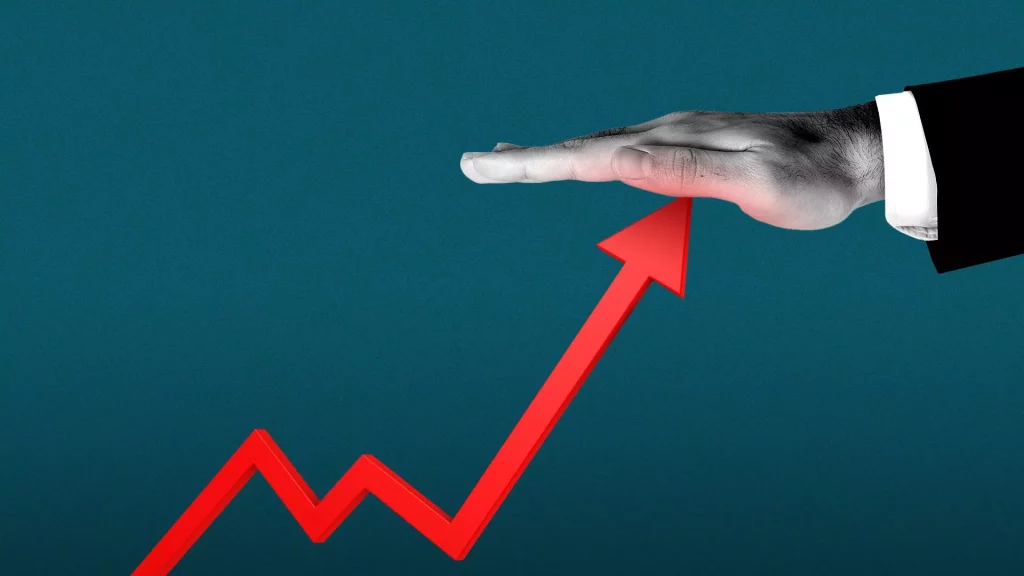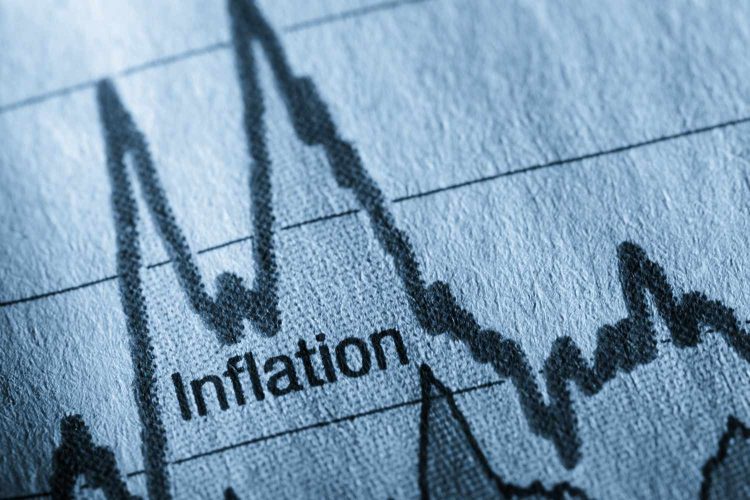In recent years, global inflation has been a persistent issue, driven by a combination of factors such as supply chain disruptions, geopolitical tensions, commodity price surges, and post-pandemic economic recovery. The prolonged nature of inflation, coupled with rising interest rates in many countries, has created a challenging environment for investors. With the global economy facing significant uncertainty, it’s crucial for investors to adapt their strategies to safeguard their portfolios and seek out opportunities in an inflationary world.
This article will examine how sustained inflation impacts investment portfolios and explore strategies that investors can employ to navigate the current and future economic uncertainties. By focusing on diversification, inflation hedging, and risk management, investors can position themselves to achieve long-term success despite the turbulence ahead.
1. Understanding the Impact of High Global Inflation
Before adjusting investment strategies, it’s essential to understand how persistent inflation impacts various asset classes and overall economic conditions.
1.1 The Effect on Bonds and Fixed-Income Investments
Bonds, particularly those with fixed interest rates, are particularly vulnerable to inflation. As inflation rises, the real value of fixed coupon payments erodes, leading to lower returns for bondholders. Moreover, central banks often raise interest rates to curb inflation, which causes the prices of existing bonds to fall. This results in higher yields on new bonds, making older bonds with lower yields less attractive.
- Interest Rate Sensitivity: Higher inflation usually leads to higher interest rates, which inversely impacts bond prices. The longer the duration of the bond, the more sensitive it is to interest rate hikes.
- Real Return Erosion: Inflation reduces the purchasing power of fixed coupon payments, leading to negative real returns on bonds if inflation is higher than the bond yield.
1.2 The Effect on Equities
Equity markets can also be impacted by high inflation. While some companies may benefit from rising prices (especially those in the commodity sector), others may struggle to pass on cost increases to consumers or face higher input costs.
- Pressure on Margins: Companies with fixed costs or lower pricing power may see their profit margins squeezed, especially if wages and raw materials become more expensive.
- Sector Performance: Inflation tends to hurt growth stocks, particularly those with high valuation multiples, as higher rates reduce the present value of future earnings. Conversely, value stocks and certain sectors like energy, utilities, and consumer staples may outperform due to their ability to maintain pricing power.
1.3 The Effect on Commodities and Real Assets
Inflation typically benefits commodities and real assets, such as real estate, because their prices tend to rise in response to inflation. Investors may turn to these asset classes as a hedge against the erosion of purchasing power.
- Commodity Prices: Commodities like gold, oil, and agricultural products tend to rise during inflationary periods as they are priced in nominal terms. Historically, gold has been viewed as a store of value during inflationary periods.
- Real Estate: Real estate can be an attractive hedge, as property values and rents tend to increase with inflation. Investors in real estate investment trusts (REITs) or directly owned properties may benefit from rising asset prices and income generation.
1.4 The Effect on Cash and Liquidity
Cash holdings, on the other hand, lose value in real terms when inflation is high. While keeping cash reserves is essential for liquidity needs, holding too much cash in an inflationary environment can significantly erode wealth over time.
2. Adjusting Investment Strategies: Key Considerations
Given the impacts of inflation on various asset classes, investors need to reassess their strategies to maintain purchasing power and long-term growth. Below are some of the key strategies to consider when adjusting to high inflation and economic uncertainty.
2.1 Diversification Across Asset Classes
One of the most important tools in an inflationary environment is diversification. Diversifying across various asset classes—such as stocks, bonds, real estate, commodities, and international investments—helps to mitigate the risk of any single asset class underperforming due to inflation or other economic shocks.
- Equities: Within equities, diversifying across sectors is key. Defensive sectors such as consumer staples, utilities, and healthcare tend to perform better during inflationary periods because they provide essential goods and services that people continue to need, regardless of price increases. On the other hand, cyclical sectors, such as consumer discretionary and technology, may face greater challenges due to higher input costs and reduced consumer spending power.
- Bonds: Bond portfolios should shift away from long-duration bonds and focus on short-term bonds or floating-rate bonds, which are less sensitive to interest rate hikes. Inflation-protected bonds, such as TIPS (Treasury Inflation-Protected Securities), can also be beneficial for hedging against rising inflation.
- Real Assets: Allocating to commodities like gold, oil, or agricultural products, as well as real estate, can serve as a hedge against inflation. Real estate and infrastructure investments provide tangible assets that are likely to appreciate over time as inflation pushes up asset prices.
- Foreign Assets: Exposure to international markets may provide diversification benefits, especially if inflationary pressures are stronger in some countries compared to others. For example, emerging markets may offer growth potential if inflation in developed economies leads to global shifts in capital flows.

2.2 Focus on Inflation-Hedging Assets
Certain assets perform well during periods of high inflation, and adjusting the portfolio to include more of these assets can help preserve capital and generate returns.
- Inflation-Protected Bonds: As mentioned earlier, TIPS or other inflation-linked bonds are designed to adjust principal and interest payments according to inflation, making them ideal for safeguarding purchasing power. For example, the iShares TIPS Bond ETF (TIP) and Vanguard Inflation-Protected Securities Fund (VIPSX) are popular options.
- Commodities and Precious Metals: Commodities, particularly gold, have historically been used as a hedge against inflation. While not a guaranteed inflation hedge, gold tends to perform well in periods of economic instability and rising inflation. ETFs like SPDR Gold Trust (GLD) or iShares Gold Trust (IAU) allow investors to gain exposure to gold without the need to physically buy the commodity.
- Real Estate: As a tangible asset, real estate tends to rise with inflation. Investors can gain exposure to real estate through REITs (Real Estate Investment Trusts) or by directly investing in property. Funds like Vanguard Real Estate ETF (VNQ) or Schwab U.S. REIT ETF (SCHH) provide diversified exposure to real estate markets.
2.3 Rebalancing the Portfolio with a Focus on Quality
During inflationary periods, the stock market may face higher volatility, and certain types of stocks may underperform. Thus, focusing on high-quality investments that can withstand inflationary pressures is essential.
- Value Stocks: Value stocks, which tend to have lower price-to-earnings (P/E) ratios, are often less affected by inflation because they typically operate in industries with stable cash flows and strong pricing power. These companies are often better equipped to pass on higher costs to consumers.
- Dividend Stocks: Companies with a strong history of paying dividends can provide a consistent income stream during inflationary periods. Dividend-paying stocks from defensive sectors, such as utilities, healthcare, and consumer staples, tend to outperform during economic uncertainty.
- International Exposure: Some investors may want to consider increasing exposure to markets that are less affected by inflation, such as emerging markets. While emerging markets face their own risks, they can offer higher growth potential compared to developed markets, especially if inflation in developed economies leads to a weakening of the domestic currency.
2.4 Actively Managing Currency Risk
Inflation can cause fluctuations in exchange rates, and in certain scenarios, investors may want to hedge against currency risk. A falling domestic currency due to high inflation can negatively affect international investments and the purchasing power of income generated from overseas assets.
- Currency Hedging: Currency-hedged ETFs or mutual funds can help reduce the impact of exchange rate fluctuations on international investments. Hedged international equity funds or global bond funds provide exposure to foreign markets while protecting against currency depreciation.
2.5 Focus on Liquidity and Flexibility
Given the uncertainty surrounding inflation and its impact on interest rates, maintaining liquidity in the form of cash or cash-equivalents allows investors to be nimble and take advantage of market dislocations when they arise.
- Cash Equivalents: While holding large amounts of cash is generally not ideal in an inflationary environment, keeping a portion in high-yield savings accounts, money market funds, or short-term treasuries allows investors to maintain flexibility for future investments.
- Flexible Investment Strategies: Flexible funds that can adjust asset allocation based on market conditions (such as balanced funds or target-date funds) can offer a built-in mechanism for adapting to economic uncertainties.
3. Conclusion: Navigating Economic Uncertainty with Adaptability and Strategy
As global inflation remains persistently high, investors must adapt their strategies to manage risk and seize opportunities. The key to navigating economic uncertainty lies in diversification, inflation-hedging assets, high-quality investments, and maintaining liquidity to capitalize on market opportunities.
By shifting portfolios toward inflation-protected securities, commodities, real estate, and value stocks, investors can protect their portfolios from the eroding effects of inflation. Additionally, focusing on global diversification and flexible strategies will allow investors to adapt quickly to changing market conditions.
In an environment of sustained inflation and economic uncertainty, successful investors will be those who can adjust their strategies proactively, maintain a balanced portfolio, and remain agile in the face of market fluctuations. By doing so, they can preserve and even grow their wealth despite the challenges posed by inflation and global economic instability.


















































